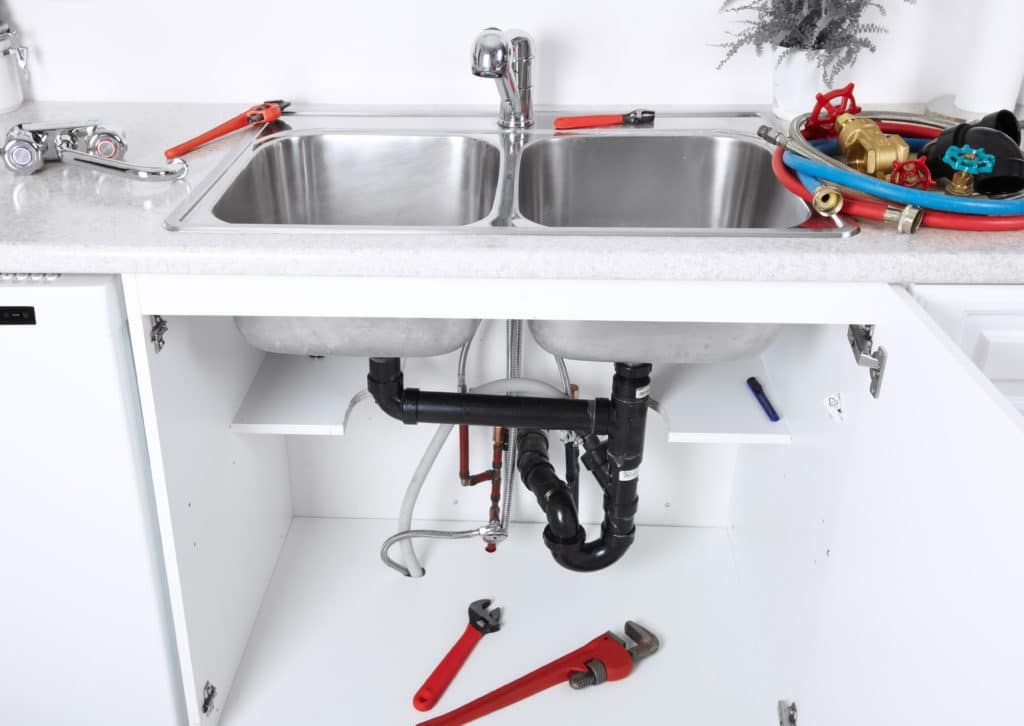Movies depict a plumber as the guy that grunts and grumbles over a broken toilet or a leaky sink. We’ll get an uncomfortable scenic view, and the scene shows a few hours later that the problem is solved. In reality, how much do we really know about plumbing?
Since August is back to school month, we thought to incorporate a little lesson to give you a head start for the school year! Not only will you learn how the plumbing system is set up, but also how the drain system plays a role in your appliances.
How is a Pipe System Set Up?
There are two separate subsystems— one that brings in water, and one that removes the water waste. Your plumbing system can be made from materials such as brass, cast iron, and copper.
Features such as the correct size, anchor, and positioning of the system are even more crucial to be keenly aware of; a system too small can cause clogging and blockage problems.
There are four main components that make up the plumbing system, which includes a supply system, stop valves, drainpipes, and traps. These components work together to move the pressurized water out of faucets into a sink or tub and out of the house and into the sewage system.
Were you ever curious of why the sink pipe is an “S” shape? It’s actually called a trap, and its purpose is so the water from the sink or tub has enough force to go down the pipe, but prevents sewer waste from going back up through them as well.
How Kitchen Plumbing Systems Affects Our Appliances
The kitchen plumbing is set up with various pipes, which we already know one is used for the hot and cold water. What are the other pipes, though? There are also pipes for a waste line, and if there are other household features, such as ones with a gas range, there may also be a gas pipe.
The hookups for the kitchen appliances are also connected with the kitchen plumbing. When using kitchen appliances such as the dishwasher or sink, not only is it important to make sure the heat of the temperature is high enough to kill the germs from the dishes, but the dishwasher has to drain water as well. We’ll also get to the drainage system in the next portion.
As for retrieving ice from your refrigerator, if applicable with an ice maker installed, you’ll have to shut off your water system briefly. After the pipe is drained, you’ll have to hook up your refrigerator to the cold water line. Once the water is connected to the water valve, your fridge should be set for ice making!
Understand Your Home’s Drainage
After a soapy round of washing dirty dishes from dinnertime, you drain the water. Once removing the plug, the water is pulled by gravity through the drainage pipes. There should be enough force for the dirty water to exit the sink, but also to where it seals off potential chances of sewer gas from entering your home.
The traps have clean-out plugs that are accessible so you can clear out the blockage or clogging if need be. Lucky for us, we hardly see the sewer system since it’s installed underground. Once the drainage system works properly, it will exit your home and enter the sewer system that generally runs down the middle of the street to the main wastewater plant.
Eventually, the pipes from our home merge into larger pipes on its way to the plant. Keep in mind, not all sewer content is waste from our home. Rain and other natural fluids may also mingle into the sewer system as well.
Pipes, Drains, and the Sewer Train
Now that we are familiar with the pipe, drainage, and sewer systems we understand a little better of what causes blockages in our systems. So, we found out that the S-shape pipe actually has a purpose, and it’s not just some pipe to unscrew if we lose our jewelry down the drain!
If your plumbing system seems to not dispense the correct temperature of water, or if it isn’t draining properly, feel free to call our pros at Always Plumbing Heating and Air to inspect your plumbing system thoroughly.

